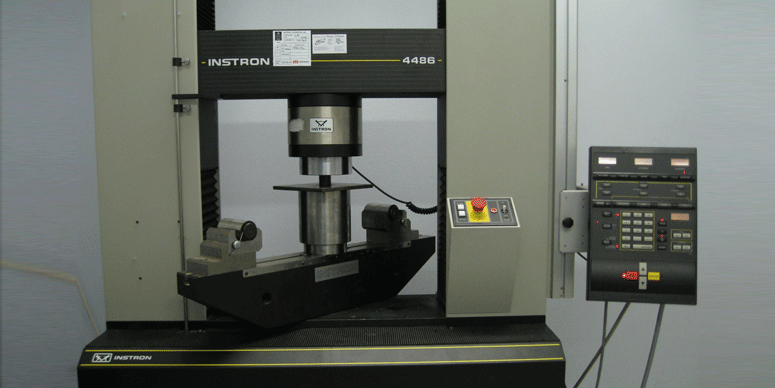
支撑剂充填层的强度评价是支撑剂充填层性能的关键参数之一。通常采用压碎实验来对其进行分析。由于没有规范统一的实验标注,因此压碎实验的结果可靠性值得怀疑。本文介绍了一种全新的测量技术。
支撑剂充填层的强度和导流能力是评价支撑剂充填层性能的关键参数。通常采用压碎实验来分析支撑剂的力学破坏特性。然而,上述压碎实验由于实验流程与实验结果的差异性仍存在不可靠性。本文介绍了一种基于声学测试的新分析技术来量化支撑剂力学破坏程度。石油圈原创www.oilsns.com
简介
通过测量超声波波速来研究地层压实与压碎的力学破坏特性。地层弹性性质可通过声波的纵波波速与横波波速求取。疏松砂岩弹性性质的研究通常采用的是组分颗粒的有效介质模型。有效介质理论方法如赫兹-明德林模型通常用于推导同粒径下球状颗粒材料充填层的有效弹性模量。上述计算模型结合了估算两个相同球法向(压缩)刚度的赫兹接触模型,以及用于估算两个相同球的切向(剪切)刚度的明德林接触模型。
对纵横波波速之比与疏松砂岩前期压实和分选产生的压力二者之间进行研究发现,与超声波测量实验得出的实验数据相比,赫兹-明德林模型求得的疏松砂岩剪切模量值偏大,而弹性模量值和波速值偏小。
产生上述差异的原因在于赫兹-明德林模型未考虑颗粒在边界处的转动与滑移作用,超声波测量则修正了赫兹-明德林模型。为了获取实验测量值与模型推导值的最佳拟合关系,在计算转化中假设颗粒之间无碎屑充填,因此颗粒间的切向刚度可忽略不计。石油圈原创www.oilsns.com
造成实验测试值与模型推导值差异的主要原因是计算模型中假设砂粒无棱角并且颗粒接触点间无滑移现象。因此,通过引入平均棱角度参数和颗粒接触点有滑移现象产生的系数来修正上述差异。
已有刊物发表过关于应用有效介质模型来评估岩石与疏松砂岩的弹性性质,但是该模型还未用于评估支撑剂充填层的弹性性质。
方法

该实验的流程由实验方法和分析方法两部分组成。该实验为支撑剂充填层设计并进行了单轴压缩实验。实验结束后将支撑剂样品从实验设备上卸下后对其进行筛选分析,以获取支撑剂的压碎百分比。在研究分析方法中,赫兹-明德林模型用于评估支撑剂充填层的有效弹性性质。最后,将模型的推导结果与实验的测量数据进行对比,并引入与压力相关的校准参数来获得模型值与实验数据间良好的一致性。
实验方法
单轴压缩实验用于研究声学测量对支撑剂力学破坏的敏感性。上述实验用同一种支撑剂分不同实验组的方式来完成,在每一组测试中将15克支撑剂放入内径为25.4毫米的不锈钢圆筒中,然后轻压支撑剂以在支撑剂充填层顶部获取一个平面。对所有的支撑剂样品都采用相同的流程进行处理,确保支撑剂充填层具有相同的初始孔隙度。特别指出,支撑剂充填层的初始孔隙度可通过支撑剂体积与支撑剂所占用容器总体积的差值获得。同时,压力加载平台上有一对内置超声波换能器,其能够测量单轴压缩实验中的纵横波波速。
在不同的最大压力值(即:28、55、69、97和110兆帕)条件下开展该力学实验,之后对每组压后的支撑剂样品进行筛选分析。石油圈原创www.oilsns.com
The strength and conductivity of proppant packs are key parameters for assessing their performance. Mechanical damage of proppants usually is analyzed by crush tests. However, measurements from these tests remain questionable because of discrepancies in procedures and test results. This paper introduces a new technique based on interpretation of acoustic measurements to quantify mechanical damage in propping agents.
Introduction
Mechanical damage that leads to compaction and crushing is studied for sands by measuring ultrasonic velocities. Elastic properties can be estimated from compressional- and shear-wave velocities calculated from acoustic measurements. The elastic properties of unconsolidated sands usually are studied by use of effective-medium models for granular media. Effective- medium-theory approaches such as the Hertz- Mindlin model are often used to derive the effective elastic moduli of packings of identical and spherical granular materials. This model combines the Hertzian contact model, which is used to estimate the normal (compressional) stiffness for two identical spheres, and the Mind-lin contact model, which is used to estimate the tangential (shear) stiffness of the spheres.
Work investigating the relationship between the ratio of compressional- to shear-wave velocities and pressure as a result of preconsolidation and sorting in unconsolidated sands showed that the Hertz-Mindlin model overestimated the shear moduli and underestimated the pressure dependence of the moduli and the velocities of the unconsolidated sands when compared with experimental data from ultrasonic measurements. The discrepancy was attributed to the inability of the model to account for rotation of grains and slip at their boundaries. The work applied a modified Hertz-Mindlin model, in which it is assumed that there is no friction between the grains (hence, the tangential stiffness is negligible), to obtain a reasonable match between the model and experimental results. The disparities were attributed to the angularity of the sand grains and the assumption of no slip at the grain contacts. The disparities were modified by introducing an average- angularity parameter and assuming slip at the grain contacts.
Previous publications documented applications of effective-medium models for assessment of elastic properties in rocks and unconsolidated sands. However, effective-medium models have not been applied in the assessment of elastic properties of proppant packs.
Method
The work flow for this work included both experimental and analytical methods. For the experiments, uniaxial compression tests were designed and conducted for proppant packs. After unloading the samples from the compression tests, sieve analysis was conducted to measure the crush percentage in the proppant pack. In the analytical method, the Hertz-Mindlin model was used to estimate the effective elastic properties of the proppant pack. The model results were then compared with the experimental data, and pressure-dependent calibration parameters were introduced to obtain a good agreement between the model and the experimental data.
Experimental Method.
Uniaxial compression tests were conducted to investigate the sensitivity of acoustic measurements to mechanical damage in proppants. The tests were conducted on different sets of samples of the same type of proppant. For each test, 15 g of proppant was placed in a stainless-steel cylinder with an internal diameter of 25.4 mm. The proppants were tapped gently to obtain a flat surface at the top of the proppant pack. The same procedure and consistency were applied for sample preparation in all the cases, to ensure consistent initial porosity of the proppant pack. The initial porosity was calculated from the difference between proppant volume and the total volume occupied in the container. The loading platens have a built-in pair of ultrasonic transducers to allow the measurement of compressional- and shear-wave velocities during the uni-axial compression tests.
After completing the mechanical tests at different maximum stresses (i.e., 28, 55, 69, 97, and 110 MPa), a sieve analysis was conducted for each proppant pack.
未经允许,不得转载本站任何文章:

 石油圈
石油圈

